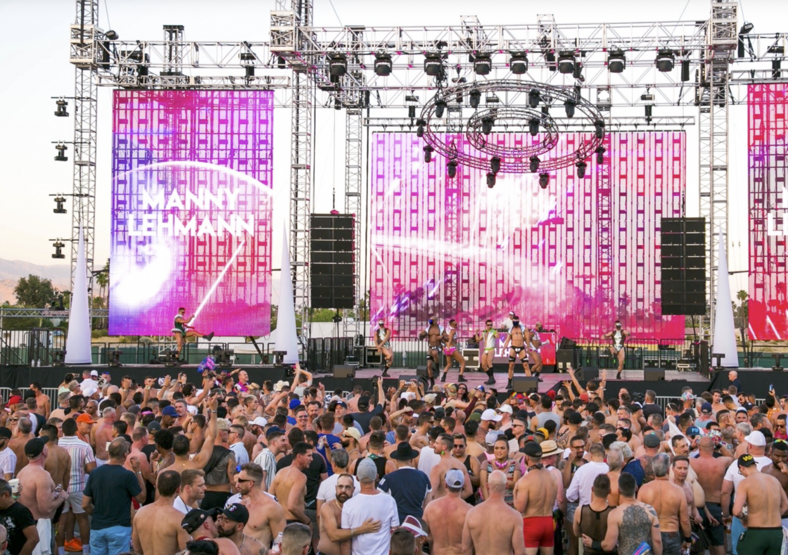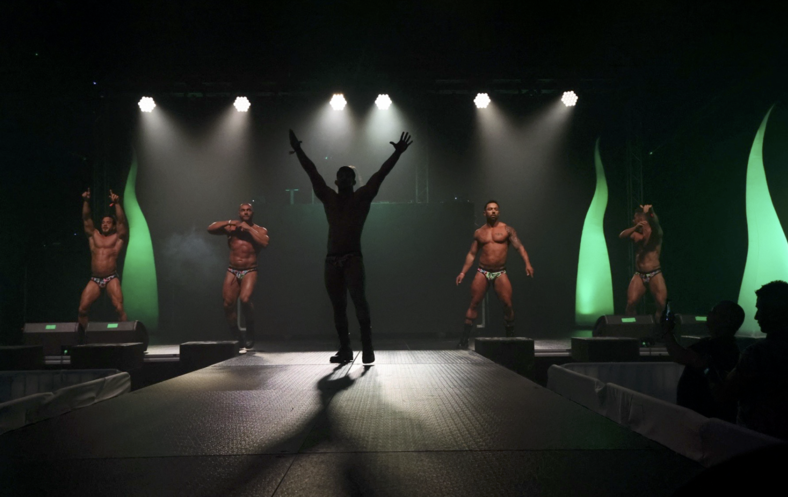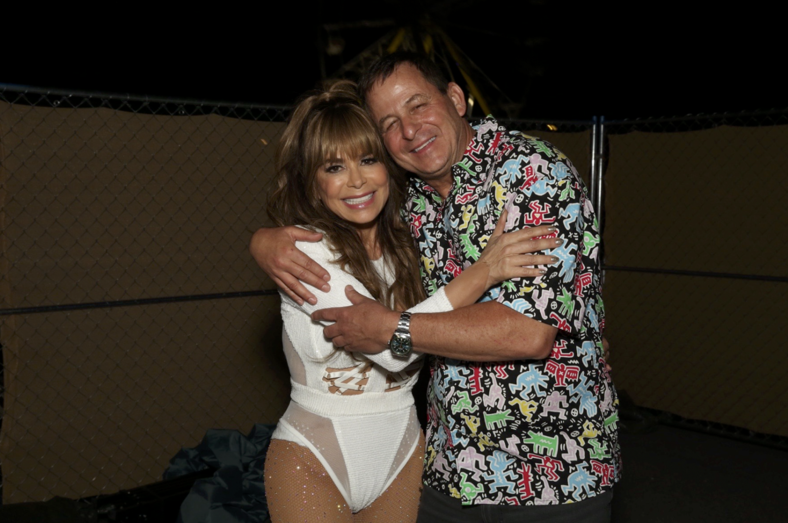
The Palm Springs White Party began in 1989 with one gay man’s initiative to have fun with 500 of his closest friends. Jeffrey Sanker organized a weekend in the desert, leveraging street cred from his professional involvement in beloved nightclubs like Studio 54 and Private Eyes. The gay community learned to trust his invites with their dollars.
Sanker launched the inaugural party at the Marquis Hotel and decided to repeat it. It became a sensation at a time when social media had yet to revoke the mystique of nightlife. Word spread to gays across land and sea about a legendary annual party set amidst the heat and sultriness of Palm Springs.

Pack your bags, we’re going on an adventure
Subscribe to our weekly newsletter for the best LGBTQ+ travel guides, stories, and more.
The city had already gained a reputation as a secluded reprieve for the elite and closeted Hollywood. Sanker capitalized on the buzz to create the world’s largest circuit party, even if he didn’t know it yet.
Sanker’s network allowed him to recruit a team of industry stalwarts and set ambitious goals. Among them was Anil Patel, who, after attending White Party as a guest in 1997, realized the event was more than just another night out; it was a boisterously gay, unparalleled experience.

Patel tells GayCities that it took a village to throw such a spectacle, but Sanker kept a keen pulse on the community.
“They used to call him the ‘Godfather of the Circuit Party’ back in the day,” says Patel.
Patel says Sanker’s ambition grew with the party, and he approached each subsequent year as an opportunity to build on it. Patil continued to attend for many years until Sanker offered him a job in the early 2000s. By this point, the party’s reputation preceded its introduction to newcomers, serving as a landmark for queer people.

The event evolved from featuring a single DJ for three days to entire festival lineups featuring headliners, including pop gay icons such as Jennifer Lopez, Ariana Grande, Lady Gaga, Kesha, Mary J. Blige, and Kylie Minogue. The event production rivaled that of mainstream festival giants.
Before Chris Diamond became professionally involved, he fondly remembers his group’s excitement as searchlights illuminated the sky upon their arrival at their first Palm Springs White Party in 2005. Diamond recalls his disbelief at the grandeur reserved for the LGBTQ+ community; one of his favorite memories involved a performer parachuting onto the stage.

The scene had become a fixture on gay calendars, not unlike a rite of passage. He says the White Party has blended tradition with innovation, featuring anticipated yearly events like the T-Dance while continually introducing new ways to impress attendees. The party went from 500 people to filling the Palm Beach Convention Center.
In 2014, Sanker was honored with a star on The Palm Springs Walk of Stars. Ironically, it was initially an uphill battle with the city for permits, but its economy now cherishes the White Party.

By this point, Sanker had established traditions with his staff, including large dinner parties at some of their favorite restaurants in Palm Springs in anticipation of the weekend. Diamond says they continue to uphold this tradition, even after Sanker passed away on May 28th, 2021, at 65 years old due to liver cancer.
“Two months before he died, [Sanker said], ‘I’m probably not going to be here much longer,’ and that was the first time that we really talked about his illness like that,” says Diamond. Sanker passed on the reins to the White Party in that same conversation.

“I told him I would do my best to keep it going for him,” says Diamond.
Diamond understood the significance of the White Party to the queer community, but Sanker also believed he had the wits to continue executing such a mass-scale yearly event, which they typically start planning nine months out on the clock. Diamond says he gained even more respect for Sanker taking over his job. “All of a sudden, you have financial responsibility and are holding all the permits. Production. Who are the best DJs? The list goes on and on.”

As Anil and Diamond continue to honor and innovate Sanker’s legacy, they say the White Party is also a magical land for nurturing a multigenerational community. It’s more in-depth than twinks and daddies, but friend groups from all generations, often mixed, share the same pools, dance floors, and dialogues.
Sanker first hosted the White Party during one of the saddest periods in queer history. But he continued it because queer joy never stops being relevant. Although it’s easy to dismiss the cultural value of the circuit party, you’re taking for granted the groups of queer people that were killed for gathering in history, from the arson attack at a gay bar in New Orleans in 1973 to Orlando’s Pulse in 2016 and Denver’s Club Q in 2022.

The White Party’s most acclaimed yearly tradition, T-Dance, is the most symbolic of queer resilience. It pays homage to tea dances held by the queer community in private locations beginning in the 1960s when it was illegal to serve alcohol to gay people or to dance with a same-sex partner.
Although LGBTQ+ visibility has never been stronger, as seen with the protests of drag bans, nightlife hasn’t stopped being under attack. Diamond hopes to reinvent the party yearly until someone else is charged with the legacy.

“There are other gay circuit parties now, but White Party puts on a production,” says Diamond. Last year, they had a drone show, and this year, visitors can only expect more. Although Sanker never sought to create the world’s largest circuit party, Diamond has made it his mission to make it the best.
Don't forget to share:



















